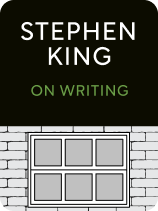

This article is an excerpt from the Shortform summary of "On Writing" by Stephen King. Shortform has the world's best summaries of books you should be reading.
Like this article? Sign up for a free trial here .
What is revision in writing? How does revision in writing work, and how can you use revision to improve your story?
Revision in writing is a part of the process where you take feedback and decide what changes to make in your story.
Read more about revision in writing and how it works below.
Revision in Writing
We’ve now covered the three main elements of a story: narration, characters, and dialogue. You also now know to write a story by putting the characters in a situation and then observing how they work themselves out of the situation. This core work of storytelling will culminate in your first draft.
After your first draft comes revision, where you polish the story you’ve created. After several rounds, you’ll end up with the final draft. We’ll cover the overall stages of writing and the revising process.
Write With the Door Closed, Rewrite With It Open
When you write your first draft, King suggests that you close your door. This is both literal and metaphorical. Literally, closing your door helps you focus and block out the outside world before you focus on revision in writing.
Metaphorically, write the first draft of your story just for you. By and large, don’t worry about what anyone else thinks. There is no outside world. The story belongs to you. (As we’ll cover soon, there’s one exception—your ideal reader.)
When you rewrite, you need to open your door. You’ll think about your readers and how to make at least some of them happy. You’ll take in feedback from people you trust and grapple with reconciling their feedback with your vision in the revising writing process.
Dealing with Feedback in the Revising Writing Process
Each person’s reaction to writing is naturally subjective, so you’ll get feedback along a wide spectrum, and you’ll get feedback you disagree with. Here’s how to work through the feedback.
Dealing with Feedback Resistance
Some writers struggle with incorporating feedback healthily. Changing your masterpiece simply because your readers didn’t like it feels like a corruption of art.
But if you feel this way, why invite readers you respect to review your draft at all? If it’s simply because you want adulation for what a genius you are, then at least be honest about what you’re looking for.
Think of reviewers as your own personal focus group to improve your writing. Movie studios do this with early cuts of their films. While it might seem arbitrary to shape an auteur’s vision to the tastes of a crowd pulled off the street, focus groups seem to work in actually making films more successful.
As we covered, King recommends putting at least six weeks between completing your first draft and starting your revision. The purpose is to get enough distance from your work that you no longer treat it as sacrosanct. Be willing to kill your darlings. This is a part of the revising writing process.
How to Weigh Feedback
You’ll get feedback all along the spectrum, and you should weigh the feedback to see where it’s pointing as the next step in the revising process.
If your reviewers are unanimous about one direction (whether something is great or terrible), they’re probably right.
Say there’s a tie—one person thinks Johnny is believable but Mary is ludicrous, and another thinks the opposite. Then the author wins. You shouldn’t feel compelled to change anything.
You shouldn’t weigh feedback from each person equally. It depends on how much you respect their opinion, and what area they’re particularly insightful about. Some people specialize in dialogue, others in character development, yet others in pacing, factual accuracy, and so on.
The Ideal Reader
There is usually one person whose opinion you trust above all: the Ideal Reader. For King, it’s his wife Tabitha, who helps with the revising process.
The Ideal Reader is the person you have in mind as you write. You come to know your Ideal Reader’s tastes so well you can predict how he or she will feel about any particular thing you’re writing. Will she laugh at this scene? Will she get bored here if I explain too much? The Ideal Reader helps give you an audience as you write and is perhaps the only exception to writing with the door closed in the revision in writing process.
The Ideal Reader should also be a honest reviewer—eternally supportive but unrelenting. You might disagree with Ideal Reader’s feedback, but you know there’s truth to it.
Especially if you start getting attention for your work, the Ideal Reader should remain unimpressed and be the objective eye bringing you back down to earth. Hitchcock’s wife
King sneaks glances at Tabitha as she reads, hoping the scenes he’s designed to score that great big laugh succeed. She’s chided him for being needy this way. He admits that writers really are needy, but he loves when she loves his work.
As you can see from Stephen King’s memoir, revision in writing is a process that writer’s need to pay close attention to.

———End of Preview———
Like what you just read? Read the rest of the world's best summary of Stephen King's "On Writing" at Shortform .
Here's what you'll find in our full On Writing summary :
- Stephen King's personal writing habits that led to superstar books like Misery and It
- How to make a story and characters feel real
- Why you should never use adverbs






